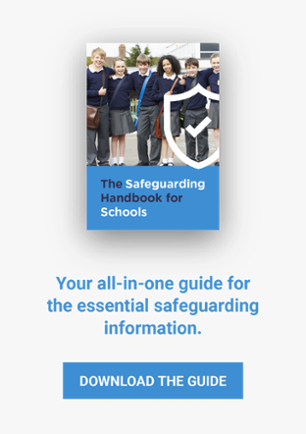Roles & Responsibilities for Safeguarding in Primary Schools
Safeguarding in primary schools is the responsibility of all members of staff. Anyone that works closely with children needs to be aware of the laws regarding safeguarding and the steps to take if they suspect abuse or neglect. In this post, we’ll outline the essential safeguarding information you need to know.
Safeguarding Legal Frameworks and Guidance
In England, the Department for Education (DfE) provides the key guidance on Keeping children safe in education (DfE, 2019a). It sets out the legal duties to safeguard and promote the welfare of children and young people in education.
It’s recommended that part one of the guidance is read by all school staff. You must also follow the guidance set out in Working together to safeguard children (DfE, 2018). Staff should regularly refamiliarise themselves with the key information set out in these frameworks to make sure they’re prepared for any possible situation where a safeguarding concern could arise.
Safeguarding Responsibilities in Schools
Teachers are quite often best placed to notice changes in pupil behaviour and spot other common signs that indicate a child may be suffering from abuse. Here are some of the safeguarding issues that they need to be aware of as part of their role.
- Child on Child Abuse: This can occur in many forms, such as sexual assault or acts of violence, and you need to take the relevant steps to deal with it.
- Neglect: The persistent failure to meet a child’s basic needs can have damaging effects. You need to be aware of the signs of neglect as this can have serious impairment on a child’s health or development. These can include dirty clothes, poor hygiene and malnourishment.
- Self-Harm and Self-Neglect: Signs of self-harm might not always be visible but changes in mood and behaviour might be a sign of depression.
- Bullying: Bullying isn’t always confined to the classroom. It can happen in playgrounds or even anonymously online which can have damaging effects on a child.
- Serious Violence: Signs include an increased absence from school, a change in friendships with older individuals and groups, a significant decline in performance, unexplained injuries and more.
- Emotional and Physical Abuse: These forms of abuse can damage a child physically and emotionally. Physically, you need to look out for signs which suggest they’re a victim of hitting, shaking, throwing, burning, suffocating and other forms of physical harm. Emotional abuse can come in several forms, such as conveying to another child that they’re worthless, unloved and not valued. Look out for signs such as slow development, being distant from others and sudden changes in behaviour.
- Grooming: In some cases, older children might behave in a way which can be considered ‘normal’ to mask underlying problems. It’s your responsibility to look out for such signs, including noticing secretive behaviour, being upset, withdrawn or distressed, going missing for periods of time and more.
- Child Sexual Exploitation: The signs of child sexual exploitation can be difficult to spot. However, possible signs include going missing for periods of time, skipping school, being disruptive, having mood swings or changes in temperament, unexplained physical harm or even appearing with gifts that can’t be accounted for.
- Forced Marriage: This is a violation of human rights and also a criminal offence. A child may be too afraid to raise this with you directly so look out for sudden changes in behaviour.
- Female Genital Mutilation (FGM): You have a legal duty to report this illegal procedure to the police if you think it may happen or has already taken place. Signs to look out for include a girl confiding that she’s going to have a ‘special procedure,’ attending a special occasion to ‘become a woman’ and talking about a long, upcoming holiday to a country where the practice is common. Indicators you must be aware of include difficulty walking, looking uncomfortable when sitting down, taking a long time in the bathroom and any sudden changes in behaviour or becoming withdrawn.
- Prevent Radicalisation: It’s your duty to recognise when a child or young adult is vulnerable, at risk of radicalisation and a target for extremist groups.
Spotting these signs is the responsibility of all staff members, which is why safeguarding training is so crucial. Regular refreshers ensure that everyone knows how to recognise when a child is at risk of any of the above and how you can properly deal with these concerns.
How Headteachers Can Improve Safeguarding at Their School
As a headteacher, you might not have the same day-to-day contact with children as teaching staff. However, it’s your job to enforce safeguarding training and ensure staff members follow the necessary policies and procedures.
- Open Communication: Take steps to ensure that all staff and volunteers feel comfortable enough to raise concerns about poor or unsafe practices with you in regards to children. An example might be to hold regular one-to-one sessions with staff to see if they have any safeguarding concerns they wish to raise. Or, they might offer feedback on the safeguarding process itself.
- Training: Enforce appropriate training to carry out your safeguarding responsibilities effectively. You also need to make sure training is updated to meet any new government policies.
- Address Safety Throughout: Your role as the headteacher will also involve a child’s safety and welfare being addressed through the curriculum. Examples include lessons on conflict resolution, discrimination, online safety and anti-bullying.
- Spot Safeguarding Issues: If you notice that a child is in danger, then it’s also your responsibility to deal with this correctly. Act professionally and discreetly when responding to a safeguarding concern and follow the correct processes.
- Policies and Procedures: It’s your responsibility to ensure that safeguarding policies and procedures are followed by all members of staff in the school, including any volunteers and visitors.
- Provide Enough Time and Resources to Staff: Dealing with top-level tasks, such as budgets, you need to ensure the Designated Safeguarding Lead (DSL) and other staff have enough time and resources to monitor and act on their responsibilities. This includes monitoring safeguarding activities, participating in strategy discussions, getting involved in inter-agency meetings and contributing to the overall assessment of children.
- Definitions: Provide a definition of all forms of abuse so staff are aware. This also includes information about the signs and indicators of abuse and what staff and volunteers should do if they have concerns about a child.
- Safety: Ensure the school environment is safe by reading and understanding the national and local guidance about preventing and responding to abuse.
- Support Systems: Put support systems in place for children who have experienced abuse including school counselling if available or by contacting external support services. For example, council-provided support services who can assist via consultations, assessments and coaching.
- Promote Healthy Relationships: Promote healthy relationships through the whole school ethos, lessons and assemblies. This will make sure children know they can approach any member of staff or volunteer if they have a problem and that they will be listened to and taken care of.
- Promote Sources of Help: You also need to ensure sources of help, such as Childline, are promoted around the school or college so children know where to go to get help if they don’t feel comfortable talking to a trusted adult.
- Provide Information to Parents: Distribute information to parents regarding abuse, including the actions your school is taking to prevent it and support available for children. Regular transparent communication ensures that any issues can be addressed at home, as well as at school.
- Safer Recruitment: When recruiting new staff and volunteers follow safer recruitment principles. They ensure you make the appropriate checks on staff and volunteers.
- Review Policies Regularly: In light of any lessons learned from a child protection incident, you must also review your policies and procedures to address any failings. Communicate these findings with staff if necessary and make changes so as to avoid issues in the future.
Even if you don’t have daily contact with children like teachers do, your roles and responsibilities will have an effect on how teachers and other members of staff can perform their safeguarding duties. It’s down to you to set a precedent for others to follow.
The Safeguarding Handbook
If you’re evaluating the safeguarding processes currently in place at your school, then make sure to download our free handbook. It features all of the essential information you need to create a safe and protective environment for children and young people.
Get your copy now using the link below.




